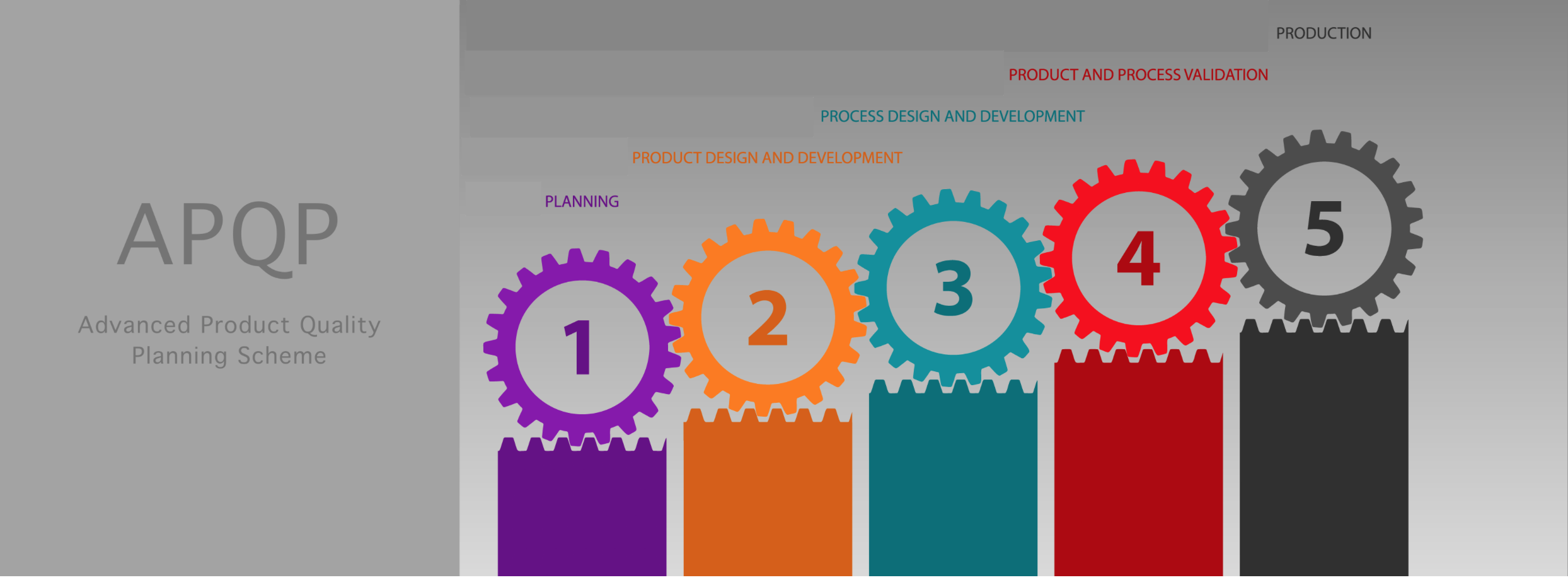In an increasingly global automotive market, suppliers such as precision metal stamping firms must be able to deliver parts with zero defects and comply with changing international industry standards, including the new IATF 16949 quality guidelines. What has not changed are the Quality Core Tools developed some 30 years ago by the Automotive Industry Action Group (AIAG) and domestic auto manufacturers. This article reviews how those Quality Core Tools are used to prevent and detect metal stamping defects.
How Automotive Quality Core Tools can Prevent Metal Stamping Defects
According to the AIAG, “The Automotive Quality Core Tools are the building blocks of an effective quality management system. Today, most automotive manufacturers and suppliers require use of one or more of the Core Tools. Therefore, organizations whose employees have mastered the Core Tool processes can assure their customers that the industry’s most qualified individuals are working on their behalf and that IATF 16949 and applicable quality reference manual requirements will be met without fail.”
The Automotive Quality Core Tools include
- Advanced Product Quality Planning & Control Plan (APQP) and the Production Part Approval Process (PPAP)
- Failure Modes and Effects Analysis (FMEA)
- Measurement System Analysis (MSA)
- Statistical Process Control (SPC)
APQP and PPAP
Through the APQP process, automotive manufacturers and their metal stamping suppliers are involved in every step of the development and launch process together – from initial development through product launch and beyond. The APQP process monitors more than 20 areas before production begins, such as design robustness, design testing, quality inspection standards, product packaging, and more.
The Production Part Approval Process (PPAP) works hand in hand with APQP. According to AIAG, PPAP is the “generic part qualification process used to determine if all customer requirements are understood by a supplier and if the process has the potential to produce product meeting requirements on a production basis. More simply, this term is describing the process for any part to be approved on a general level. This is the first step checking for quality of parts, but this is not the only step.”
To ensure that parts will meet or exceed all OEM specifications, metal stamping firms should offer the expertise of their engineers and tool and die designers early on in the part design process to ensure Design for Manufacturability (DFM). Although a component metal stamping may seem like a small item in the overall product design, it can make a big difference. Metal stampers should demonstrate their willingness to participate in Collaborative Product and Process Design so that the part is developed to meet the manufacturer’s specifications, as well as the achieve the optimal metal stamping design to reduce risk of failure, increase productivity and contain costs.
Metal stamping quality from start to finish
Quality-minded metal stampers will:
- Ensure that correct tooling parameters are established from the outset
- Define control plans
- Conduct initial capabilities studies to determine that the process is stable
- Confirm consistency in production runs on a continual basis
For more information on how metal stamping firms can contribute to DFM to prevent metal stamping defects, please see our blog article: “Starting DFM Early Limits Part Failure Risk.” In addition, the article “Automotive Industry Averts Risk with APQP” provides further details.
Failure Modes and Effects Analysis (FMEA)
Failure Modes and Effects Analysis (FMEA) is the process used to identify possible failures in design, manufacturing and assembly of a product or part. Failure modes refer to the ways that a product might fail and its probability, and effects analysis refers to the potential consequences. The aim is to reduce or eliminate failures, starting with the most critical. When hiring a metal stamping company, project managers should insist they complete a Process FMEA that rates what could go wrong in the metal stamping and secondary processes and identify ways to reduce the probability of failure.
In addition to evaluating products for quality prior to beginning production, metal stamping companies should also apply disciplined processes throughout production to ensure a quality output.
Our blog article, Metal Stamping Companies Adopt Automotive Industry Best Practices, provides further details on the importance of FMEA in metal stamping.
Measurement System Analysis (MSA)
The standardized Measurement System Analysis (MSA) for automotive suppliers is employed to manage error and ensure quality in both the manufacturing processes and the products that result. The five parts of MSA are bias, stability, linearity, and gauge repeatability and reproducibility (GR&R).
In precision metal stamping, MSA should be employed every time a new job requires tooling, beginning with a control plan that lists the measurements to be taken during the process and the critical “classification of characteristics” required by the client. Most manufacturers do not require all five parts of MSA, focusing mostly on GR&R, but all set a maximum tolerance for acceptable variation.
GR&R requires both repeatability (the same operator gets the same reading on different runs) and reproducibility (different operators get the same reading on different runs), with sufficient numbers of measurements given to ensure the client that their tolerance levels are being observed. Metal stampers should be able to provide both upfront reports to manufacturers as well as continue to take the same measurements throughout production to ensure continued accuracy.
For more information, please refer to our article, “Does Your Precision Metal Stamper Practice MSA? Ask.”
Statistical Process Control (SPC)
Statistical Process Control Systems use statistical methods and procedures, such as control charts, to analyze the inherent variability of the metal stamping process and part production and to track the metal stamping manufacturing process in real time.
Important attributes are assigned to the metal stamping along with an acceptable range for variances during manufacturing. Variances from the norm are charted automatically in real time with SPC software, allowing a manager to determine trends and identify when specifications are out of line or an unstable condition occurs which requires further study, and allowing for the quick resolution of any problem. SPC is an efficient process that results in less interruption and process slowdowns than with direct examination and inspection methods.
For more information on the importance of SPC in metal stamping, please refer to our blog article, “Want Consistent Metal Stamping Quality? Insist on SPC.”
Quality Control Technology and Commitment to Quality
In evaluating a metal stamping supplier, it is important to gain an overview of the technology in place to ensure quality and how frequently that equipment is used to prevent metal stamping defects. The best metal stampers will employ quality control processes to detect potential problems in real time in order to avoid defects.
Quality control technology in metal stamping includes:
- Statistical process control systems
- Optical vision systems
- Functional gauges and custom gauges
- Digital measuring machines with metrology software
- In-die detection systems
- In-die measurement systems
A Commitment to Zero Metal Stamping Defects
Quality in automotive metal stampings relies on strong systems of prevention and detection, and precision metal stamping firms should demonstrate their proficiency in all of the Quality Core Tools. Prevention of problems should be the primary focus for metal stampers, involving both the process tools used in metal stamping and other methods to prevent defects. Detection is an ongoing effort using automated inspection technology and statistical process control to constantly monitor production standards and identify variances as soon as possible. With a comprehensive quality system in place at the metal stamping firm, automotive manufacturers can feel confident that even the most complex metal stampings will meet or exceed their quality standards.


